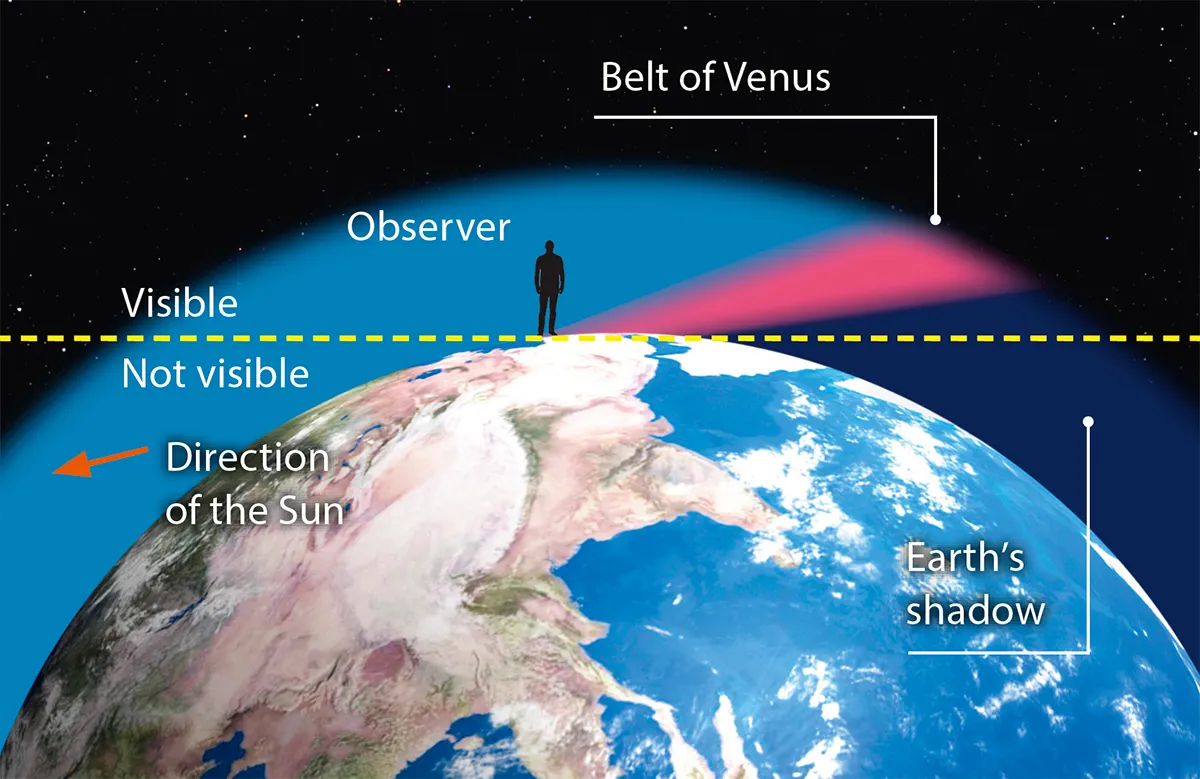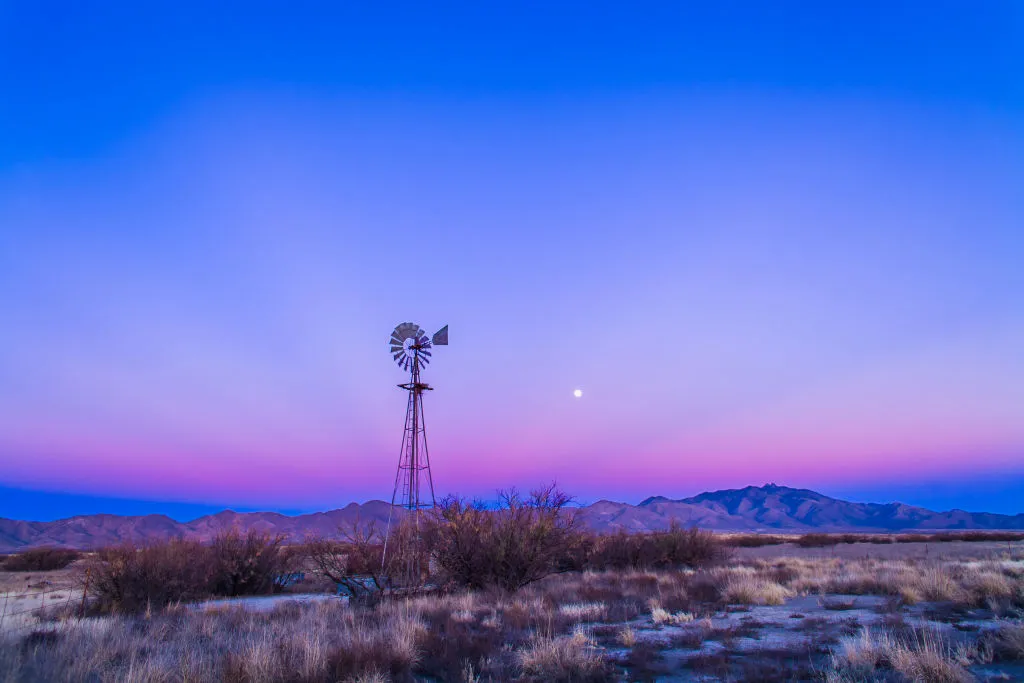On a clear evening, as the Sun is setting in the western sky, you may have noticed a scene reminiscent of a watercolour painting: at twilight the eastern horizon becomes awash with a band of pale pinks and blues.
If you have, it’s likely that you have spotted the Belt of Venus, a subtle atmospheric phenomenon that can be delightful to observe.
The name is somewhat misleading, however, because the Belt of Venus has nothing to do with the planet Venus, but is instead associated with the girdle or belt worn by the Greek goddess Aphrodite, the Roman counterpart of Venus.
In this guide, we'll take a look at what causes the Belt of Venus.
What causes the Belt of Venus?

As the Sun rises in the east or sets in the west, sunlight reflects off the dense atmosphere in an effect called backscattering, which creates a pink band of light on the opposite horizon to the Sun, above the antisolar point. This pink band is the Belt of Venus.
When the Sun is below the observer’s line of sight, incoming sunlight passes through more atmosphere near the horizon, which causes the observer to see pink wavelengths of light backscattered from the atmosphere.
The resulting pink band, the Belt of Venus, appears above Earth’s shadow.
How to see the Belt of Venus

Though it can be viewed at sunrise, the best time to see the Belt of Venus is at sunset.
When the Sun is setting in the west, look east to see the Belt, which is visible about 10–20˚ above the horizon.
As Earth rotates, sunlight is unable to reach parts of our atmosphere and the pink band turns blue towards the horizon.
This is Earth’s shadow being cast on to the atmosphere, and as the shadow continues to rise, the band becomes arch-shaped and broadens out.
To properly see the Belt of Venus, all you need is a clear sky, shortly before sunrise or after sunset, and an unobstructed horizon.
The Belt of Venus is a peaceful sight to observe, and it may be visible from a few minutes up to 20 minutes.
This guide originally appeared in the May 2022 issue of BBC Sky at Night Magazine.
